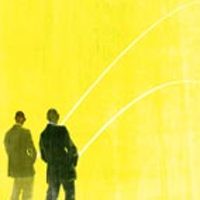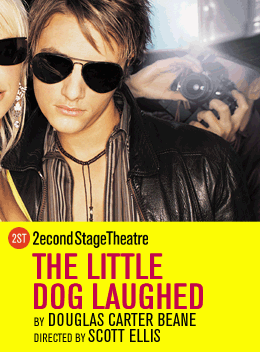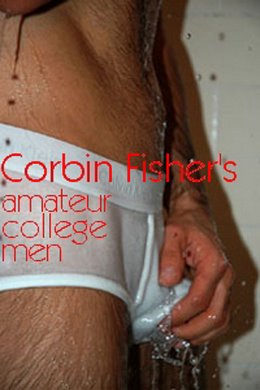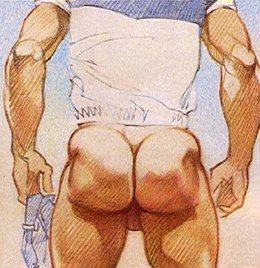Anthony Castro, R.I.P.

A tribute to a friend and an athlete
By Jim Buzinski
Outsports
It's hard to write about a friend who has just died, but people need to know about Anthony Castro, killed in a crash in the Southern California mountains on Jan. 21. He was 19.
Anthony was that rarest of people – an athlete out to his team. In Anthony's case, he was out in high school to his football and wrestling teams, our two most macho team sports. It took guts to take such a step but Anthony never thought too much about it – he was not ashamed of who he was and if you were uncomfortable, that was your problem.
My favorite Anthony story involves his senior year of wrestling. A fellow wrestler used to make snide homophobic remarks to Anthony.
Rather than file a complaint with the school, Anthony addressed the problem head on – he challenged the wrestler to a put-up-or-shut-up match. It didn't take very long, as Anthony had the guy pinned in about 20 seconds. That stopped the heckling and Anthony told me the guy quit the team.
Anthony was not a student in some L.A. Westside hotbed of tolerance. Rather, he lived in Banning, two hours east of L.A. in the desert and a rather "red" part of a very "blue" state. Being out in Banning, a pretty rough place, takes some big cojones.
I first met Anthony in November 2005, when I received an e-mail from him about playing for our L.A. Motion gay flag football team.
"Hi, I'm Anthony. I live in Banning, California. I am a gay athlete and still in high school. … With no other gay jocks, I feel like I am the only one and it sucks cause I don't know any other guys that are gay and like me. I play football, basketball, track, cheerleading and swim. I have been playing football since I was five. I am the tight end for my high school, free safety and kickoff and punt returner. I don't know why I told you this but there you go. LOL. You guys are the closest to me and I figured if I was going to be moving down there, I should find out about things that are going on what are the age limits that you guys need to join."
At first I thought the letter was a prank – the odds of an openly gay high school player in Banning seemed remote and Outsports does get the crank e-mail from time to time. But I wrote him back with sincerity and was surprised when he showed up, as promised, a few days later. He had a build more like a linebacker than quarterback, but in just a few plays I could tell he had great skills. I could also tell he was a bit awed to be playing football with a bunch of openly gay guys.
"It was really fun," he wrote me a few days after his first game. "I told my wrestling coach that we better not have practice on Saturdays. He said why, so I told him I joined a gay flag football team. So he said don't worry we won't. So he was cool and I like it because it is fun playing with all you guys."
We then saw him virtually every week from then on and he showed a commitment that is rare. He was always the first to arrive despite driving two hours to get there. He especially liked the fact that he could be himself, flirt if he wanted and not have to worry about it. He took a liking to one of our players, JP, and they used to kid each other all the time about JP being a senior citizen (32 looks like that to an 18-year-old).
"Hey, Mr. Hit Young Guy in the Nuts," he wrote JP after one game when JP guarded him and things got a bit rough. "Well, it was fun playing football, even though you hit me in the nuts. By the way, they still hurt like hell. Hope your boyfriend hits you in the nuts or something."
Like most single 18-year-olds, Anthony was always on the prowl and would write me "woe is me" e-mails as he pined for someone new who showed up at football. "I am not going to let him score on me unless it's in bed," he wrote about one lust object who was guarding him one week. His e-mails were always a highlight for me and I felt like a big brother to him.
He also had a turbulent upbringing. He told me his mom rejected him for a time because he was gay, even though she lives with a woman (I never figured that one out). He wrote about seeing his dad in jail and having a relative with AIDS. He wound up living with a legal guardian, Phil, who had a tremendously positive influence on him and was a key support for Anthony on and off the field.
Football was always a refuge for him, even as he endured tragedy. "I am not doing so good," he wrote me last winter. "Two of my friends were shot and killed 2 days ago and another friend was jumped badly. I don't know what the world is coming to these days. I have been trying to not think about it, but it is hard. I mean, those are guys I helped out and had them play football to stay out of trouble. I wish I could have been there for them. The guys came from rough lives and they told me playing football helped them out a lot to not think about drugs or anything. I am a little sad. Hopefully football will help take my mind off it."
One day at football last spring, he introduced me to a friend he had brought, Cody, a handsome, athletic 24-year-old. "He's straight," Anthony whispered to me. Minutes later, I saw Anthony lying on the sidelines in Cody's lap, soaking up the SoCal sun. Straight, my ass! Cody was Anthony's new boyfriend and I could tell he was beaming. They were perfect for each other and quickly fell in love.
I knew things were serious when Anthony called me one Saturday to say he was going to miss football – he and Cody were going to Disneyland. A second time when they skipped football, JP wrote me sarcastically but with affection: "Lame excuse. I'm a lawyer and I can smell BS stories a mile away. This kid was sitting at home with his new love."
Anthony and Cody quickly became fixtures at football and the other players gravitated towards them. They were fun and full of life and love, and Anthony (who could be grumpy at times) was a much looser person with Cody. When Cyd and I picked our Outsports flag football team for the 2006 Gay Games, Anthony was one of the first people invited.
The Gay Games were something special for Anthony. He was going to play in a tournament with other gay athletes and he could bring his boyfriend along without fear or shame. Younger than everyone else by six years, he became our team's little brother.
On the field at the Gay Games, Anthony was a star. Playing receiver and defensive back, he caught the go-ahead touchdown in the gold medal game, and added an interception in the end zone to boot. In a close win a day earlier he made a catch on fourth down that was so amazing that people just screamed "that's sick!" when he came down with it. Watching Anthony receive his gold medal from teammate Esera Tuaolo gave me goose bumps; two out jocks, separated by a generation but bonded nonetheless.
Anthony loved USC football, his 1999 Mazda Miata 10th anniversary edition, his No. 10 jersey and postgame trips to Tommy's burgers with Cody. I will miss him terribly.











